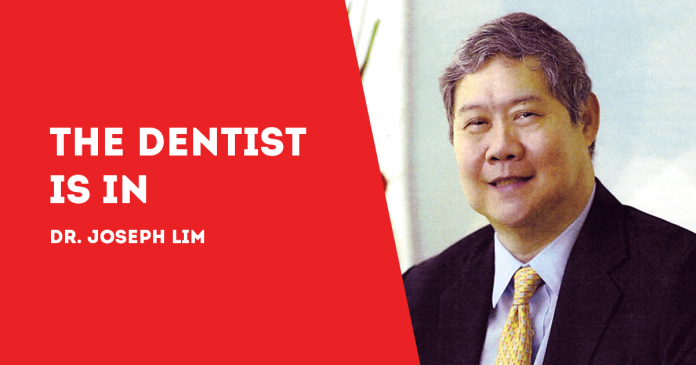
DR. MELISSA Turner calls it “the elephant in the room.”
The phrase comes from an English idiom for an important and controversial issue that everyone knows about but no one talks about because it is uncomfortable to many.
It’s teledentistry, or distance dentistry.
In its most state-of-the-art application, teledentistry is a live, two-way interaction between a patient, caregiver or provider, that is the dentist or the dental staff, using audiovisual telecommunications technology like the Internet. Or it could involve the old reliable, the telephone, or in our times, the mobile smartphone.
Patients can provide the signs and symptoms and dentists can provide the diagnosis and the management of the dental issue. This is probably the most basic of teledentistry as we know it here in the Philippines.
In more advanced settings, it could mean – as defined by the American Dental Association – patient care and education delivery using, but not limited to, different modalities. These include store-and-forward transmission of recorded health information (for example, radiographs, photographs, video, digital impressions and photomicrographs of patients) through a secure electronic communications system to a practitioner, who uses the information to evaluate a patient’s condition or render a service outside of a real-time or live interaction.
It may be remote patient monitoring where personal health and medical data collection from an individual in one location is transmitted via electronic communication technologies to a provider (sometimes via a data processing service) in a different location for use in care and related support of care.
Or it may also be Mobile Health (mHealth) when health care and public health practice and education are supported by mobile communication devices such as cellphones, tablet computers and personal digital assistants.
“The bottom line is telehealth services are a simple and effective way to create additional touchpoints and opportunities to connect with your patients both now and in the future,” says Dr. Turner, writing in dentaleconomics.com.
“Whether it’s restructuring an operating model, reviewing vision and mission statements, or adapting social media-based marketing strategies, now is a great time to find ways to advance your mission,” she says, pointing out that “forward-thinking business owners will see this as a rare opportunity to explore alternative methods of bringing value” to both patients and practice.
“No matter where you are on the teledentistry journey, it is important to keep five things in mind as you move forward during the current pandemic,” says Dr. Turner, the cofounder of the National Mobile Dentistry Conference and the American Mobile Dentistry Alliance. She is also the creator of I Heart Mobile Dentistry, a Facebook networking group for clinicians practicing mobile dentistry.
One, she recommends that dentists connect with those already implementing teledentistry. “There are numerous Facebook groups, professional associations, and other online networks filled with those who have pioneered the way in telehealth. Join email lists, view webinars, and — most importantly — take time to personally connect with experts and industry leaders.”
Two, dentists should learn about regulations related to scope, supervision requirements, procedure definitions and anything else about virtual or off-site provision of services.
Three, the dental staff must learn about teledentistry. “Chances are your team will be thrilled not only to be on the cutting edge of technology but also to have a way to provide continuity of care for your patients,” Dr. Turner says. “Decide on which technology communications platform you will use, and then have your team practice it with one another.”
Four, “start simple and start with just one easy and familiar patient.” A follow-up consultation is a start. “Slowly add patients over the next couple of days to find your groove. From consultations, to problem-focused evaluations, to aligner checkups, emergencies, and more, you will soon be comfortable enough to kick it into high gear, which means you are ready to.”
And five, use social media. “Send out email blasts, set up drip campaigns and push out teledentistry services to your patient network. Offer discounts, or simply ‘Schedule your first virtual consult for free!’ campaigns,” Dr. Turner says.
***
Dr. Joseph D. Lim is a former Associate Dean of the UE College of Dentistry, former Dean of the College of Dentistry, National University, past president and honorary fellow of the Asian Oral Implant Academy, and honorary fellow of the Japan College of Oral Implantologists. Honorary Life Member of Thai Association of Dental Implantology. For questions on dental health, e-mail jdlim2008@gmail.com or text 0917-8591515./PN





